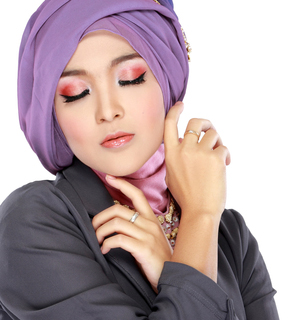In early October, Kline attended the Indonesia Halal Expo (INDHEX 2015) in Jakarta, where the participants included prominent local and international names from technology, banking and finance, pharmaceuticals, and cosmetics, in addition to the mainstay of Halal—the food and beverage industry.
The success of the annual event, now in its fifth year, is indicative of Halal becoming increasingly mainstream in various walks of life in the dominantly Islamic markets, such as Indonesia. This was also the first international Halal event held in Indonesia since the Halal Product Certification Bill was passed in the country in September 2014, mandating that all products sold in the country—and their manufacturing, distribution, and supply chain—be Halal certified by 2019.
The Halal Product Certification Bill is known to marketers by various names, with general awareness about it high. However, even though the buzz about Halal is stronger than ever, there is also an undeniable air of uncertainty about the necessary course of action for the local and international brands operating in Indonesia. In the absence of clarity about the stipulations of the law and the exact operational and logistical nuts and bolts of the mandate, marketers, suppliers, and even certifying bodies wait in anticipation to receive further guidelines from the government.
Despite the uncertainly, local marketers continue to offer their Halal-compliant products, realizing that opportunity lies in the fact that 87% of the Indonesian population is Muslim, and Halal is an important influencer of their choices. Outside of this tiny island nation, Muslims form a sizeable market—one-fifth of the world’s population is Islamic. The first beauty products that promised “Halal” were likely the brainchild of one such savvy marketer, rather than a result of consumer demand. Unlike in the case of food where non-Halal options are not acceptable to many Muslims, few consumers are sticklers when it comes to beauty products which are applied topically and not seen as products of consumption.
However, since its global introduction, the idea of non-food Halal products has caught on, and it is clear that the concept is here to stay. Skin care and cosmetics brands like One Pure Beauty, Amara Cosmetics, Inaka, Wardah Cosmetics, and Martha Tilaar have created a place for themselves in the global markets, offering entire ranges of Halal-compliant products. From non-alcohol-based makeup removers and astringents to Halal CC and DD creams featuring all the latest innovations in skin care, but none of the forbidden ingredients, these manufacturers offer the entire gamut of products that conventional beauty companies do.
Selling alongside products with the Halal seal in stores in Jakarta and elsewhere are the various more expensive and glossily packaged, imported non-Halal products. There is demand for both; if the latter were to disappear from stores, it is unlikely they wouldn’t be missed. Consumers are loyal to beauty products that work for them, often unwilling to compromise on their preferences. The success of any Halal product rests on its physical attributes and efficaciousness than merely the Halalness of the formulation.
In Indonesia, it is the waiting game for Halal for now. In the rest of the world, Halal beauty remains niche but growing. In the long run, its sustainability stems from the ability of manufacturers to create products with alternative ingredients, without altering the quality, sensorials, and effects on skin that consumers are used to and expect.
To learn more about the market for Halal skin care and makeup products in Indonesia, please refer to Kline’s upcoming Decoding Halal Beauty in Indonesia, a comprehensive assessment of the current market situation and dynamics, as well as the future regulatory changes that are expected to take place and the implications these may have on beauty marketers.

